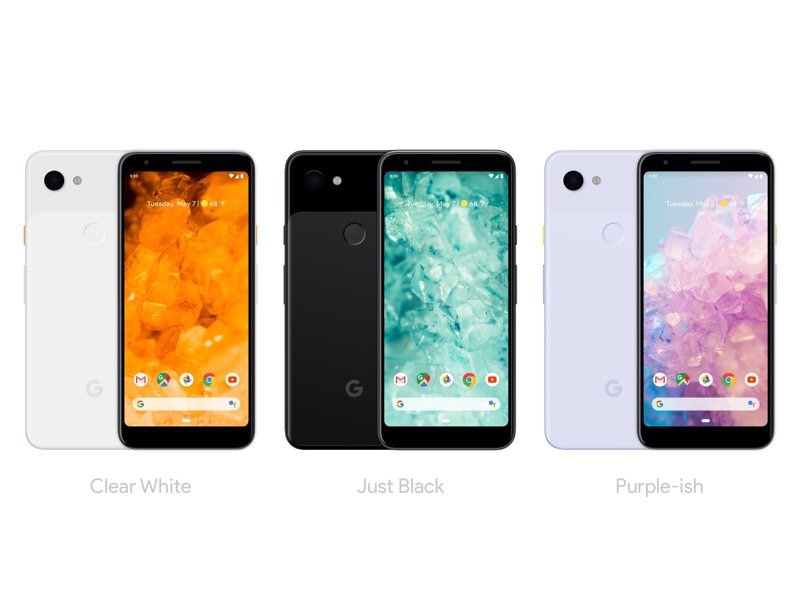While the main Pixel line was pushing flagship boundaries (and prices), Google recognized a demand for a more affordable way to get that “Pixel experience.” In May 2019, at Google I/O, they delivered exactly that with the launch of the Google Pixel 3a and Pixel 3a XL, kicking off the beloved and budget-friendly “a” series.
The Mission: Flagship Camera, Mid-Range Price
The core philosophy behind the 3a was simple but brilliant: deliver the absolute best part of the flagship Pixel 3 – its incredible camera – at roughly half the price. Starting at just $399 for the 3a and $479 for the 3a XL (compared to the $799+ launch prices of the Pixel 3 line), these phones immediately stood out in the crowded mid-range market.
Design and Build: Smart Compromises

To hit that lower price point, Google made some sensible changes to the design and materials:
- Polycarbonate Body: Instead of the glass and metal construction of the Pixel 3, the 3a series featured a sturdy polycarbonate (plastic) unibody. While not feeling as premium, it was lighter and arguably more durable against drops (though more prone to scratches). Google cleverly retained the visual two-tone finish on the back.
- Headphone Jack Returns! In a move celebrated by many, the 3a and 3a XL brought back the standard 3.5mm headphone jack, which had been absent since the original Pixel.
- Familiar Feel: The reliable rear-mounted fingerprint sensor (Pixel Imprint) remained, and the phones came in Just Black, Clearly White, and a unique “Purple-ish” color.
- Display: They featured bright and colorful OLED displays (5.6-inch on 3a, 6.0-inch on 3a XL), though protected by Asahi Dragontrail Glass instead of the pricier Corning Gorilla Glass found on the flagships.
- What Was Cut: To save costs, features like wireless charging and an official IP rating for water resistance were omitted.
Hardware: Capable Mid-Range Power
Under the hood, the 3a series made a clear distinction from the flagships:
- Processor: They used the capable mid-range Qualcomm Snapdragon 670 processor. While not as powerful as the Snapdragon 845 in the Pixel 3, it provided smooth performance for everyday tasks and, crucially, was powerful enough to run Google’s camera AI.
- RAM & Storage: Came with 4GB of RAM and a single 64GB storage option (eMMC standard, slightly slower than the UFS in the Pixel 3), with no microSD expansion.
- Battery: Featured solid battery capacities (3000mAh for 3a, 3700mAh for 3a XL) with 18W fast charging support, often providing better endurance than the standard Pixel 3 due to the less power-hungry processor.
- No Pixel Visual Core: The dedicated image processing chip from the Pixel 2 and 3 was absent, meaning image processing took slightly longer, but the end results were remarkably similar.
The Star: An Uncompromised Camera
This was the Pixel 3a’s killer feature. Google equipped it with the exact same 12.2MP rear camera sensor (Sony IMX363) and lens (f/1.8 with OIS) as the flagship Pixel 3. This meant buyers got access to Google’s industry-leading computational photography, including:
- Night Sight: Incredible low-light performance.
- Portrait Mode: Excellent software-based background blur.
- Super Res Zoom: Enhanced digital zoom.
- Top Shot: AI suggestions for the best photo in a burst.
While it lacked the Pixel 3’s front ultrawide camera (having only a single 8MP selfie shooter) and the Pixel Visual Core for faster processing, the rear camera photos were virtually indistinguishable from its $800 sibling. This was unprecedented camera quality in a $400 phone. (Note: The free unlimited original quality Google Photos backup was downgraded to high quality for the 3a).
Software: The Full Pixel Experience
Running Android 9 Pie at launch and receiving updates up to Android 12L, the 3a series retained almost all the signature Pixel software features, including Call Screen, Now Playing, the clean Pixel interface, and timely updates. The inclusion of the Titan M security chip also carried over.
Reception and Legacy: A Resounding Success
The Pixel 3a and 3a XL were met with widespread acclaim. Reviewers and users praised them for offering outstanding value, democratizing access to a truly flagship-level camera, providing good battery life, clean software, and bringing back the headphone jack.
While the plastic build, lack of wireless charging/water resistance, and mid-range processor were acknowledged trade-offs, the consensus was that Google had made the right compromises. The Pixel 3a series proved massively popular and successfully established the “a” series strategy, setting the stage for future affordable Pixel phones that focused on delivering core Google strengths at an unbeatable price.
